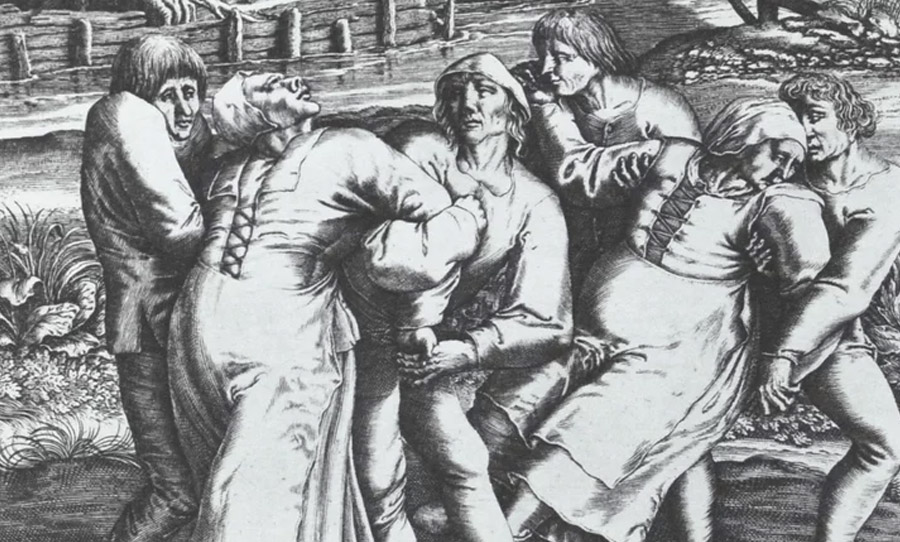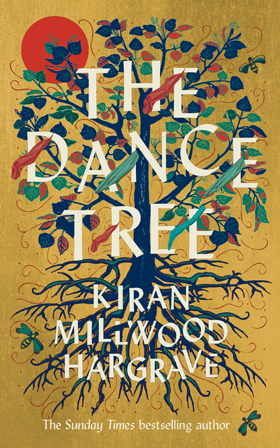Set 500 years ago yet remarkably prescient, The Dance Tree is the latest immersive and entrancing novel from best-selling author, Kiran Millwood Hargrave.
Kiran Millwood Hargrave knows how to put readers at the heart of a scene, no matter how far away it is from their current situation. Recently, she took us to the Arctic north of Norway in the heart-stopping The Mercies. In her latest, The Dance Tree (Pan Macmillan), the place is Strasbourg, the year, 1518.
Despite its inherent distance in time and space, the world that Millwood Hargrave creates isn’t one you simply observe: you live within it. We spoke with the award-winning British author about the centuries-spanning connections she made between this historical period and now, choreomania, and the power of poetry in the editing process.

HAPPY: Like The Mercies, you’re reached back into history to find inspiration for The Dance Tree. What is it about Strasbourg in 1518 that inspired you? And how do you view it in relation to our times?
KIRAN: Every novel I’ve written so far has begun with a strong image that arrived into my mind: a girl walking through a butterfly swarm, a woman standing on a cliff edge, moments of arrival or flux and always full of strangeness. This one began when I read an Atlas Obscura article about dancing plagues.
It described Frau Troffea beginning to dance and the match was struck – I had an image: a woman dancing in a market square. The bizarre nature of the episode was intriguing enough, but the fact a woman began it all hooked me. What drove her to dance?
The parallels between central Europe in the 1500s and today are all too prescient. We are living in a time of hyper connection, and alienation is its bedfellow. The printing press was proliferating information in Strasbourg – the sudden overexposure to the details of war and ruin added to the hysteria of the time.
Then, as now, there were battles between ideologies and religions, panic around mass immigration and its attendant racism, and climate change that brought famine and drought. It’s historical fiction with modern preoccupations.

HAPPY: Can you shed light on the research process? Was it difficult to keep the narrative on track without disappearing into a fascinating (and potentially distracting) historical rabbit hole?
KIRAN: I’m in awe of writers who do all their research beforehand and are able not to fill their stories with tangential information! I’m very careful in early drafts to focus on my characters’ experiences of the worlds around them – writing from the body. This allows me to access a time and place in a human and universal way – we all know what pain, lust, fear feels like.
From the second draft onwards, my research amps up and I’m looking at details of what they wore, ate, drank, did day-to-day. But my focus on character first allows me to wear the research lightly and focus on what matters to the story and the reader, rather than get sidetracked.
HAPPY: In a period when women had such little agency, you created pockets of sanctuary and freedom for the incredible protagonist, Lisbet. I was particularly struck by her relationship with her bees, for example. Can you tell me how her character evolved?
KIRAN: I’ve never had a character change under my fingertips the way Lisbet did. As the drafting process progressed, she went from a naïve, petulant girl in her first pregnancy to a woman rocked by repeated pregnancy loss, seeking solace in her skill with the bees. This mirrored my own experience – while writing I lost six pregnancies.
As you say, women had little agency, and their currency was bound up in their childbearing and rearing. I became interested in how a woman would move through the world if she had this seemingly inherent purpose removed from her. Lisbet feels unmoored, except for when she is working with the bees.
But her grief has also allowed her to access a new view on the world — the Church says her children are damned because they were not baptised, and that she is not a mother because none of them lived. But she feels a different truth in her heart, and this forges her.
HAPPY: Your writing is scintillating and sensual, even when describing domestic chores. For example:
“Lisbet strips back the sheets, fingers gritty with dust, and sweeps the floor, finding small soft feathers from the blackbird, empty snail shells, their glistening trails buffed to a shine by the heat.”
There’s a pervasive textural realism that places the reader in the heart of every scene. Does that flow naturally, or are returning time and time again to these passages and etching in the finer details?
KIRAN: This is integral to my writing — I want to elevate the everyday experiences of women, the domestic, to something worthy of attention. So many women lived lives inside the home, but they were not small lives — they were full of passion and disappointment and drama. I want to imbue every moment with this weight. It’s a conscious rebellion against masculine emphasis.

HAPPY: Does the process of crafting a children’s book differ greatly from that of an adult book? Similarly, does your poetic mind inform your fiction writing?
KIRAN: The process is the same for me. I start with a strong visual, a sense of place and time, and first drafts are all about situating my characters within that. I don’t plot — I have an idea of where I’m going but not how my characters will get there. That’s what keeps it interesting for me, and you find they start to become real and make decisions I never could have thought to make for them. My books usually take about six months to draft, and then another year to polish.
Poetry absolutely imprints on my work, not only in word choice but also in brevity — my books are always on the shorter side! Poetry also taught me to be a ruthless editor, which is very useful in prose.
HAPPY: Finding evidence of ‘dance plagues’ in the history books must have been like striking gold for a storyteller. Are there any more historical adventures for you on the horizon?
KIRAN: Yes, but I’m very keen not to be pigeonholed as a writer. I was careful in my kids’ books career to move from fantasy to historical to mystery to contemporary. In fact, I don’t think of myself as a historical fiction writer, but rather that the stories that found me just so happen to be set in the past!
That said, I am fascinated by history and will turn to it again and again, I’m certain. My next novel for adults is set in the British Raj, and I’m just starting to tentatively unfurl my fingers towards ideas around that.
The Dance Tree is out now via Pan Macmillan.



